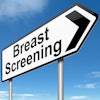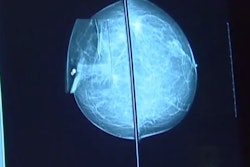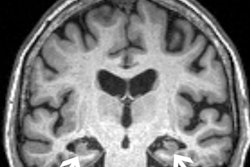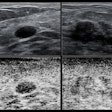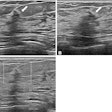Representation of Hispanic and American Indian or Alaska Native individuals in the National Cancer Database (NCDB) has increased over time, according to research published December 27 in JAMA Network Open.
A team led by Yasoda Satpathy from University of California, San Diego found in a study of more than 5 million individuals who were diagnosed with breast, colorectal, lung, and prostate cancer that while these groups were undercaptured in the database, their representation improved over time.
“An understanding of the limitations of the NCDB, including limited representation of Hispanic and American Indian or Alaska Native individuals, can help inform clinical decision-making, especially when using studies that are based on the NCDB,” the Satpathy team wrote.
The NCDB is a widely used resource for cancer research, including for radiology studies. However, the researchers noted that the current state of representation of different racial and ethnic groups compared with the United States Cancer Statistics (USCS) database is not well known.
In a multicenter retrospective study, Satpathy and colleagues evaluated whether Hispanic and American Indian or Alaska Native individuals have lower representation in the NCDB compared with the USCS database. They assessed individuals in both databases diagnosed with breast, colorectal, lung, and prostate cancer in two periods: 2004 to 2006 and 2017 to 2019.
The team included data from 5,175,007 individuals. Of these, 0.5% were American Indian or Alaska Native, 3.1% were Asian or Pacific Islander, 12.01% were Black, 6.58% were Hispanic, and 77.81% were white.
| Changes in overall capture rates in the National Cancer Database (NCDB) | ||||
|---|---|---|---|---|
| Race/ethnicity | 2004-2006 | 2017-2019 | Absolute percentage change | p-value |
| American Indian or Alaska Native | 20.72% | 41.41% | 20.69% | < 0.001 |
| Asian or Pacific Islander | 50.46% | 71.39% | 20.93% | < 0.001 |
| Black | 49.69% | 71.83% | 22.14% | < 0.001 |
| Hispanic | 40.83% | 54.75% | 13.92% | < 0.001 |
| White | 53.43% | 74.18% | 22.23% | < 0.001 |
The absolute percentage changes were positive for both racial categories across all four cancers included in the study, the team also reported. However, these changes were lower for Hispanic individuals than those of white individuals.
Additionally, the absolute percentage changes were greater for American Indian or Alaska Native individuals than for white individuals when it came to capture rates for prostate (14.68% vs. 11.57%) and breast (21.61% vs. 17.9%) cancer (p < 0.001 for both). However, the same could not be said for lung cancer (24.54% vs. 33.03%; p < 0.001).
The findings suggest that while these groups are significantly underrepresented in breast, colorectal, lung, and prostate cancer in the database, substantial progress has been made in increasing representation, the study authors wrote.
They also highlighted that understanding the limitations of the NCDB is key to addressing barriers people in historically underserved populations and improving health outcomes.


